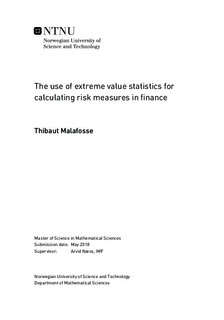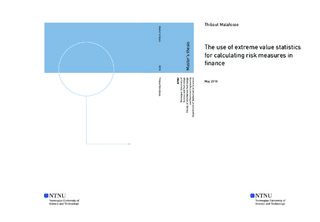| dc.description.abstract | Whatever his strategy is, an investor has to know the risk he will deal with in taking a short or long position on an asset or a derivative. On the financial market, the Value at Risk is one of the values used to evaluate the risk. The main goal of this value is to know up to which amount we can invest without risking a shortfall. Currently, the methods to calculate this rate are developed in using the classical statistics. The three most famous methods are the Variance/Covariance, the historical and the Monte Carlo methods.
\\Nevertheless, the shortfall is usually caused by an unpredicted event, sometimes coming with an unpredicted cost. Consequently, it could be more coherent to study the Value at Risk inside the Extreme Values Theory. In this paper, we are dealing with the Average Conditional Exceedance Rate (ACER) functions built to permit us to work on the extreme values. However, this method seems to be accurate to predict values in a short interval but presents some limits concerning the calculation of the Value at Risk.
\\The goal of this Master's thesis is to compare this extreme value technique with the classical ones. We will detail as much as possible the different steps needed to create this method and to implement it. | |

